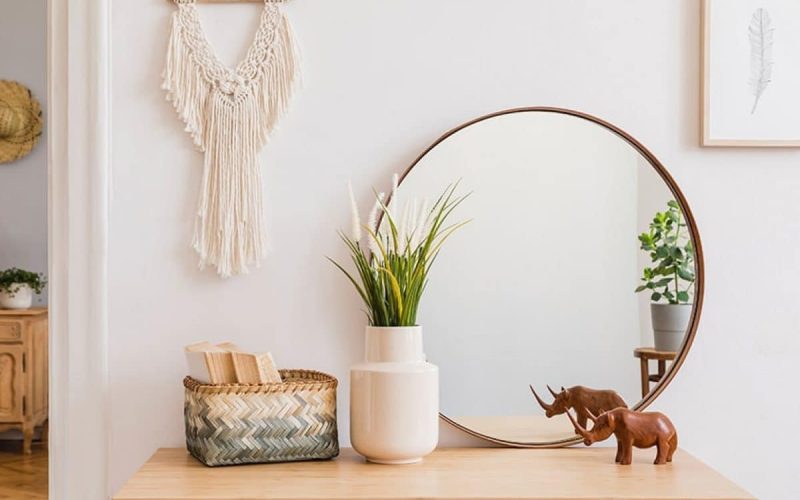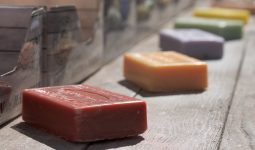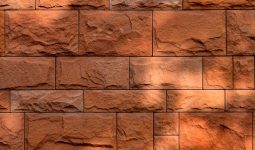It’s essential to check your excellent looks using different mirrors. The looking glass provides various mental benefits, such as raising your confidence.
Mirrors are a terrific way to dress up a room, and they boost the vastness and brightness of a room attractively.
Humans have always been fascinated by their reflections, which is why mirrors play an essential role in our daily lives.
It boosts a person’s confidence and adds refinement to space as a decorative component, especially tastefully placed.
Like everything else, mirrors come in a variety of shapes and sizes, each with its own set of functions.
This section will examine the many kinds of mirrors. If you’re seeking the appropriate mirror for your spare space, here are the various kinds of mirrors to consider.
1. Plane Mirror
You’re undoubtedly staring at a plane glass when you gaze in any mirror in your home, boutique, office, or restroom.
A plane mirror, also known as a planar mirror, is a type of mirror built from a flat sheet of glass. It reflects an object’s dimensions in its natural state.
Furthermore, the reflection you perceive from this mirror is a mirror image. Holding up a sheet of paper with a word on it in front of a flat glass mirror, the mirror reflection will show the word flipped as if it were written backward.
In addition, A plane mirror is the best mirror for you if you wish to see yourself because it reflects genuine proportions and provides virtually similar images.
2. Concave Mirror
A concave mirror is one of the different types of mirrors bent inward, like a spoon, used to make concave mirrors.
Because of the inward curve that allows more light to reach the reflective surface, objects in a concave mirror appear more significant than in real life.
This is why concave glass is frequently used in magnified mirrors, such as those we employ in the restrooms.
3. Convex Mirror
Another name for this type of mirror is the converging mirror. Unlike concave mirrors, convex mirrors tend to curve outward, making pictures appear more petite than usual.
Even though the image created is skewed, it provides more coverage for seeing.
As a result, it’s easy to see why it’s primarily utilized in car rear-view mirrors or what’s known as vigilance mirrors. They’re also used in street lamps as reflectors.
4. Non-Reversing Mirror
True mirrors are non-reversing mirrors that do not flip the image and offer the most accurate reflection of an object or person.
This type of mirror is a non-reversing mirror that shows you how you seem from the point of view of someone approaching you. It’s like staring at a photograph of yourself.
Looking into a non-reversing mirror may seem unusual at first, and it may take some getting used to as you grow used to seeing your features in a different light.
Furthermore, a non-reversing mirror creates this real-life reflection because it is not one mirror; it’s two distinct mirrors linked at a 90-degree angle so that one reflects off the other.
In addition, this double reflection, in effect, reverses the flip caused by the opposite mirror. Where the two mirrors meet, there is usually a line.
When the two mirrors are appropriately lined up, a well-made, non-reversing mirror can be adjusted to cover the line completely.
Furthermore, this type of mirror is used in a department shop’s changing room. Non-reversing mirrors are standard, which explains why many people are uncomfortable trying things there.
5. Two-Way Mirror
This is one of the different types of mirrors. One side of a two-way mirror is reflective, while the other is clear.
If you’ve ever watched a crime thriller, you’ve probably seen a two-way mirror used to interrogate a suspect in the interrogation room.
On the other hand, two-way mirrors are used in various situations, including labs and dance studios.
In addition, two-way mirrors are made the same way as traditional mirrors. The only difference between them is that two-way mirrors usually have a thinning metal backing.
This thinner covering filters the light that passes through the mirror, resulting in one side of the mirror reflecting more while the other remains transparent.
6. Freestanding Full-length Mirror
As the name says, this mirror style allows you to see yourself head to toe. This type of mirror is rectangular or elliptical.
They aren’t ordinarily freestanding, but you can have them wall-mounted if you want to save some floor space.
This type of mirror comes in various forms, including traditional, cheval, and leaning.
7. Traditional Full-Length Mirror
Traditional full-length mirrors are often smaller and narrower than other full-length mirror designs. Because of their modest size, you can lean the mirror upright against a wall or install it.
A full-length mirror can also be hung horizontally on the wall to make a room appear larger. If you prefer the mirror to stand freely, some conventional mirrors feature an easel on the back that offers support.
8. Cheval Full-Length Mirror
This mirror includes feet that allow it to stand independently on the floor. It’s commonly found in walk-in closets and dressing rooms. It’s ideal for fitting because you can tilt the mirror to your liking.
In addition, the Cheval full-length mirror adds vintage air to your space and is ideal for retro and stylish decor.
9. Leaning Full-Length Mirror
This is one of the different mirrors, unlike the cheval mirrors with a foundation and some traditional full-length mirrors with easel support, which is more likely to be freestanding.
Furthermore, They’re on the floor, with the top of the mirror against a wall. As a result, leaning mirrors can be large and make a big statement in a room.
10. Mounted Mirror
Mounted mirrors, which vary in size from tiny to medium, reflect your head, shoulders, or upper torso. They’re made to be utilized in many rooms and for various functions.
Mounted mirrors come in practically every shape, including rectangular, round, oval, and other standard designs, as well as abstract forms.
Mirrors mounted on cabinet fixtures or nailed directly into the wall are helpful in bathrooms. Wall-mounted mirrors with extension arms are standard in modern bathrooms.
So you can draw the mirror closer to you for a better look and then push it back against the wall to save room when you’re done.
Small mirrors on a wall can liven up bare walls in corridors or other areas.
11. Over-the-Door Mirror
This mirror style is ideal for tiny places because it can be put behind doors, in cabinet sets, or anywhere else in the room.
Furthermore, this is one of the different types of mirrors that saves the most space. So, if you have a little area and are considering purchasing a mirror, this is most likely the best option.
12. Vanity Mirror
If you have a large enough dressing room, you might want to consider adding a vanity desk and chair and a vanity mirror.
Vanity mirrors aren’t just for rare occasions when faultless hair and make-up are required. They can also be used for daily grooming.
13. Bespoke Mirror
Getting a custom-designed mirror is ideal if you want a mirror that makes a statement and is constructed to your exact requirements.
You can customize every aspect of a bespoke mirror, from the size to the glass cut, frame, size, and mirror mounting. The only restriction is how far you’re ready to push your imagination.
A customized mirror may blend seamlessly into your home’s décor and taste without compromising. A custom-made mirror is also one-of-a-kind, and any room can benefit from custom mirrors.
A professional mirror-maker can help you realize your idea, whether you want matching big mirrors to brighten your living areas or a spectacular mirror to wow guests as they walk into your foyer.
14. Antique and Vintage Mirror
An antique mirror is one of the different types of mirror that has been around for at least a hundred years. Some of them may even be collectible and valuable.
Old mirrors are pretty straightforward to recognize since mirror manufacturing processes from prior eras differ from those used today.
Tarnishing, oxidation, and a tiny waviness in the glass are all hallmarks of antique mirrors that you won’t find in modern mirrors.
However, just because a mirror shows signs of wear and tear doesn’t indicate it’s an antique. That’s because, as the appeal of vintage décor has grown, the damaged look on mirrors has become all the rage. Some mirrors are chemically “antiqued” on purpose.
They’re housed in frames that trace past Gothic, Baroque, and Georgian design movements. In spaces with classic and traditional décor, vintage mirrors look great.
15. Custom-designed Mirror
As the name implies, this type of mirror is manufactured according to your preferences. Custom-made mirrors are available in a variety of styles, including:
Full-length mirrors assist you in dressing up. Backsplashes made of mirrors add a special touch to your kitchen.
Mirror tabletops are both beautiful and functional. Mirrored walls allow a unique effect in your bedroom. In addition, mirrors with impressive frames draw attention to specific parts of the room.
16. Silvered Mirror
This sort of mirror is coated with a reflective coating, which can be made of various materials, the most common of which is silver.
Because it is made of silver, this mirror lasts longer and is lighter than other types. It’s frequently seen in ornamental mirrors for bathrooms and furniture.
17. Acoustic Mirror
This mirror is distinctive in that it does not reflect visual reflections, and it reflects sound waves. The military uses it, and it’s best for sports events because it can pick up distant sounds.








